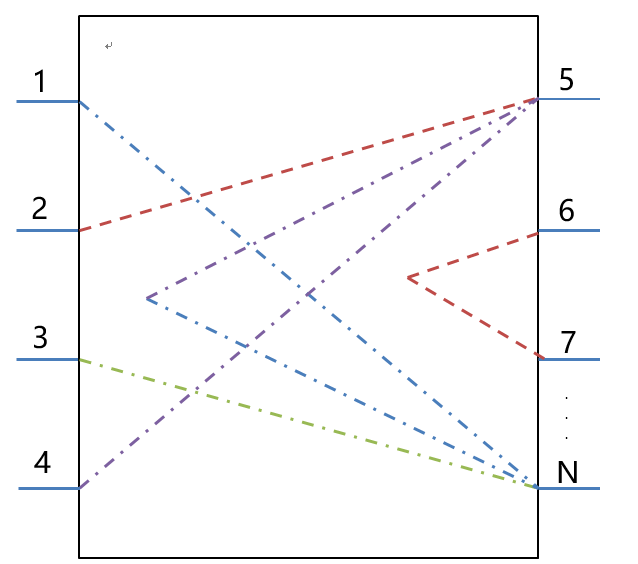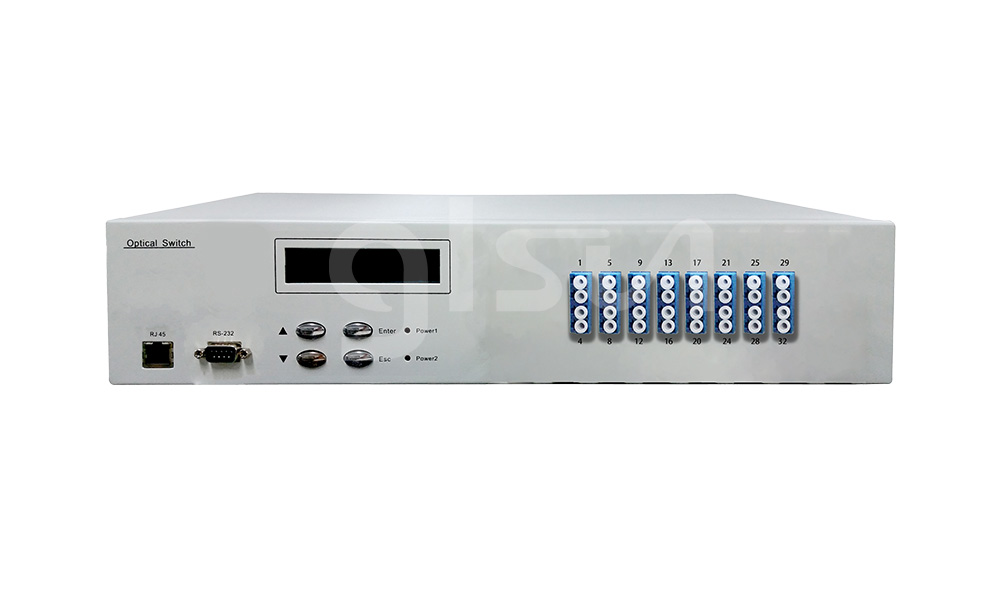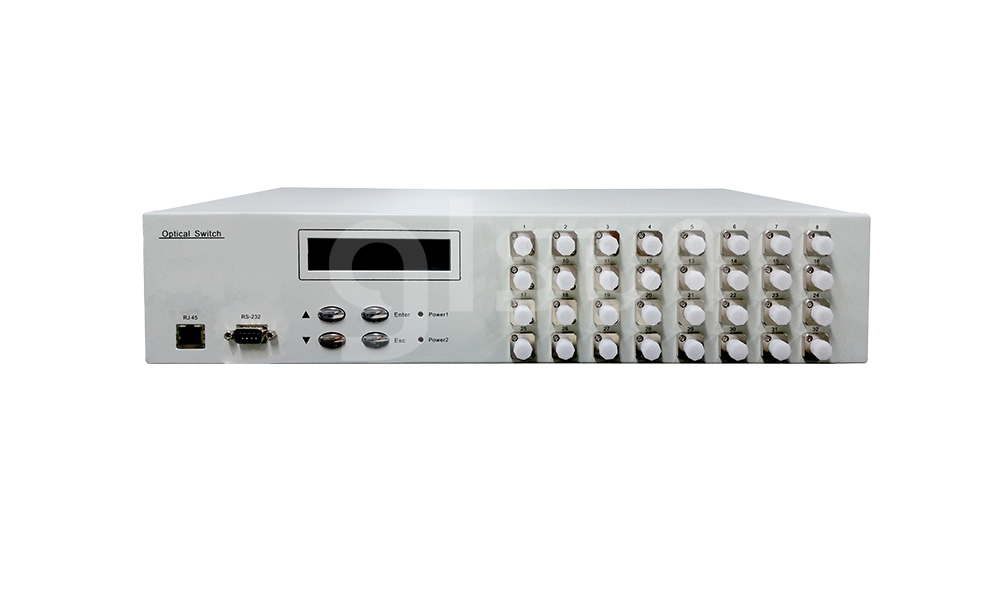How MEMS Matrix Optical Switches Support Dynamic Reconfiguration in OCS?
2024-11-15
As data transmission demands continue to grow exponentially, optical networks require more efficient and adaptable configurations to handle dynamic traffic patterns. Optical Circuit Switching (OCS) provides an ideal framework for high-speed, direct light-path communication, eliminating the need for electrical conversions. MEMS (Micro-Electro-Mechanical Systems) matrix optical switches are central to this adaptability, offering a compact, precise, and energy-efficient solution for dynamic network reconfiguration. These switches enable rapid, programmable connections between input and output fibers, supporting flexible and responsive topologies in today's high-capacity optical networks.
What is MEMS Matrix Optical Switch
MEMS matrix optical switches leverage micro-electro-mechanical systems to control the direction of light by physically moving small mirrors or other micromechanical elements. These switches allow for a matrix-like connection of multiple input and output fibers. By adjusting the orientation of mirrors or actuators within the MEMS device, light from any input fiber can be directed to any output fiber, creating a flexible switching matrix.
MEMS switches are distinguished from other types of optical switches—such as mechanical or liquid crystal switches—by their high precision, compact size, and low power consumption. Their ability to establish robust, high-throughput connections with minimal signal loss and their scalability make them highly suitable for large-scale OCS systems.

Understanding Dynamic Network Reconfiguration in OCS
Dynamic network reconfiguration refers to the ability of a network to adapt its topology and resource allocation based on fluctuating traffic demands. In OCS, dynamic reconfiguration is essential for several reasons:
Efficient Bandwidth Utilization: By dynamically adjusting the optical paths, network operators can maximize the utilization of available bandwidth.
Reduced Latency: Direct optical paths reduce the need for intermediate processing, which lowers latency.
Fault Tolerance: Reconfigurable networks can rapidly adjust to failures, rerouting traffic around damaged fibers or nodes.
Energy Efficiency: By turning off unused paths or optimizing the paths for minimal energy use, networks can reduce their power consumption.
How MEMS Matrix Optical Switches Facilitate Dynamic Reconfiguration
High-Speed Switching
MEMS matrix optical switches are capable of high-speed switching, making them well-suited for dynamic reconfiguration. These switches can change the light paths within milliseconds, allowing rapid adjustments in response to network demands. For instance, during peak times, the network may require additional bandwidth to handle increased data flows. MEMS matrix switches can quickly establish new paths or reroute traffic to less congested areas, enhancing overall network efficiency.
Scalability and Flexibility
MEMS technology supports the development of highly scalable matrix switches, capable of handling hundreds or even thousands of channels. In a large-scale optical network, having a switch that can dynamically connect any input to any output fiber is critical. MEMS matrix switches provide this level of flexibility, making it possible to support reconfigurable topologies without requiring significant manual intervention or complex signal processing.
High Optical Performance
MEMS matrix optical switches typically have low insertion loss and excellent crosstalk performance. In optical networks, preserving signal quality is essential to maintain high data rates and reliable connections. The precision control inherent in MEMS switches allows them to maintain high optical performance even in complex, dynamically reconfigured networks. This high-performance characteristic ensures that data transmission remains uninterrupted and clear, even as paths are frequently updated to adapt to changing traffic patterns.
Compact Size and Low Power Consumption
MEMS-based optical switches are remarkably compact, making them ideal for space-constrained data centers and telecommunication facilities. Their low power consumption also aligns with industry trends toward greener, more sustainable networks. Unlike traditional electro-optical systems, which require significant power to convert signals, MEMS switches work purely in the optical domain, eliminating the need for energy-intensive electrical conversions. This efficiency allows networks to scale up without proportionally increasing their power footprint, a key advantage for large-scale, reconfigurable optical networks.
Enhanced Reliability and Longevity
MEMS matrix optical switches are mechanically robust, with minimal moving parts subject to wear and tear. Their longevity and reliability are essential for OCS systems, where continuous reconfiguration could otherwise place stress on the switching components. MEMS switches are designed for high endurance, capable of handling millions of switch cycles without significant degradation. This durability enables them to support the long-term needs of reconfigurable optical networks, ensuring stable, high-performance operation.
MEMS matrix optical switches are indispensable for enabling dynamic network reconfiguration in Optical Circuit Switching systems. Their high-speed switching, scalability, optical performance, and durability allow OCS networks to adapt rapidly to changing demands, making them ideal for data centers, telecommunications, and cloud-based applications. As networks continue to expand and diversify, the role of MEMS matrix switches in ensuring efficient, high-capacity, and resilient optical communication will only grow. Their integration with SDN and other advanced network management technologies promises to usher in a new era of optical networking, meeting the requirements of future high-demand environments.









